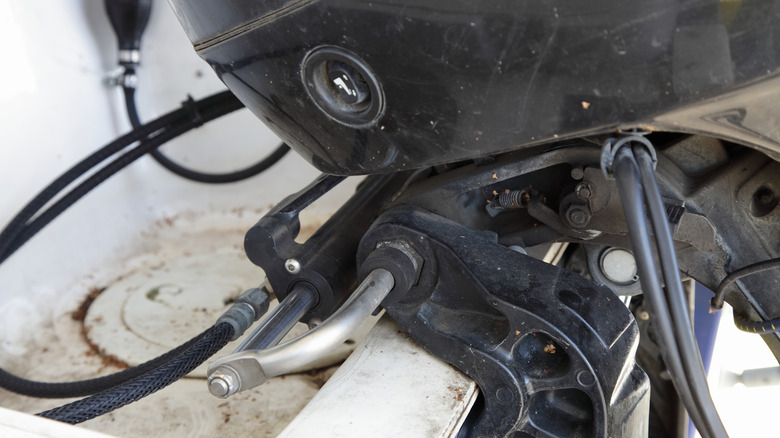Why You Should Pack WD-40 For Your Next Boating Trip
Whether you are headed to one of the best national parks for freshwater fishing, looking to spend a day water skiing on your local lake, or planning to cruise the coast on your boat, there is always the chance of a minor malfunction ruining your excursion. In many instances, you can avoid aborting the day's plans by having the lifesaving equipment every boater should have for any emergency situation and a basic set of tools on board. However, very often, boaters don't have the one thing that can resolve the minor issues that occur while boating: a can of WD-40.
Long considered the most popular and common household spray lubricant in America, today, WD-40 offers a wide range of products, including silicone spray, penetrating oil, and electrical parts cleaner. While each of those specialty products can serve a purpose for boaters, carrying a can of the original multi-use product should be considered almost as critical as choosing the right life jacket for your kids. Having WD-40 on board can not only save a day on the water but can also help boaters avoid dangerous situations. The company's site claims there are more than 2,000 uses for WD-40, dozens of which apply specifically to boating. There are at least that many reasons why you should pack WD-40 for your next boating trip.
WD-40 can solve sticky situations while boating
No one plans a day on the water with the expectation of something going wrong. However, very often, an issue arises. It is quite common that these unforeseen malfunctions have to do with electrical connections or components not working as they should. This is really no surprise, as boats and the trailers that transport them are constantly exposed to water. Metal and electrical components inevitably rust or corrode, which can lead to bad electrical connections and sluggish or stuck moving parts. WD-40 can help address each of these issues.
The need for WD-40 may start before you even hook up your boat. Locks that are used to secure boat trailers and equipment, as well as those on storage hatches, tend to rust over time. A shot of WD-40 into the keyhole is usually enough to free the lock and allow access. If you have a flat on the way to the boat ramp, odds are the lugs on your trailer may not want to release. Spraying them with WD-40 and allowing the substance to soak for a bit is often all it takes to loosen them. This tactic can be applied to any hardened moving part on the boat — sticky bilge pump float, steering rods, engine tilt levers, hatch hinges, throttle controllers, etc.
Keep boat parts clean and corrosion free with WD-40
Boating and sailing are among the outdoor sports that cost more than you think. With that in mind, it makes sense to take good care of your equipment and keep everything working. As mentioned, boats comprise of metal components, many of which are designed to move. To help prevent corrosion and rust on these parts, wipe them down with WD-40 each time you use the craft. The same goes for the trailer. It is a good idea to spray the winch, lugs, wheels, hubs, and other moving parts to help displace water and protect against rust and corrosion. If your boat sits for a long period between uses, it is a good idea to reapply every few weeks. WD-40 can also be used to clean rust on any electrical contacts on batteries, as long as you wipe them clean afterward.
There are a few more unexpected ways to protect your boat with WD-40. If your boat has been moored in the water for some time and you find barnacles growing on your hull after haul out, WD-40 can make removing them much easier. It is recommended to spray WD-40 on the barnacles and allow the product to sit for 30 seconds before scraping. Boaters in northern regions can also find WD-40 handy in the winterizing process. Wiping down your engine and other moving parts will help displace water so that it doesn't freeze inside the parts over the winter.


